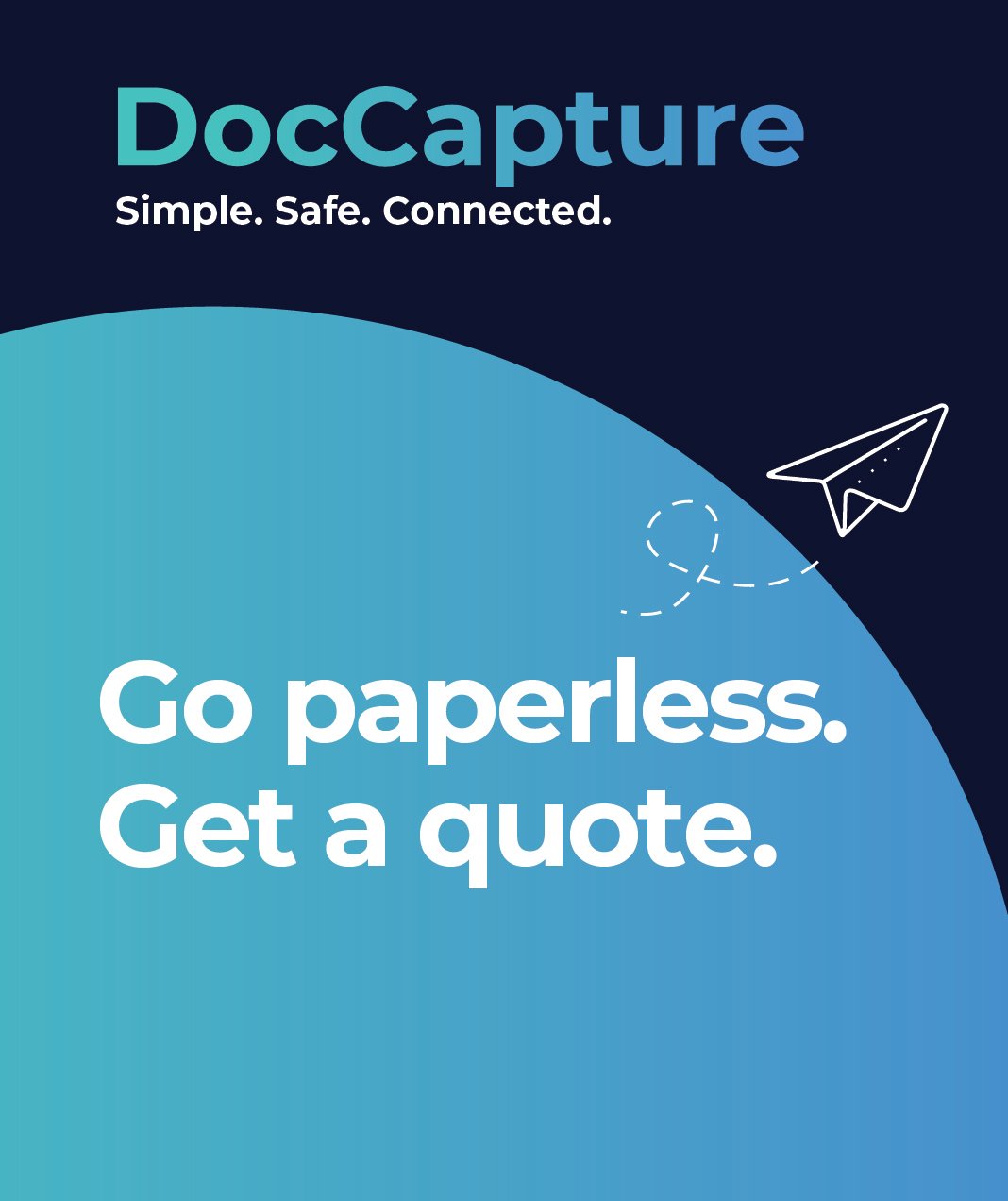Enhancing Regulatory Compliance in Government Through Digital Records
Table of contents
In today’s fast-paced government environment, the pace of regulatory change is relentless. New transparency mandates, evolving retention laws, and stricter audit requirements are reshaping how agencies must manage their records. For many government organizations still relying on paper, this shifting landscape creates a perfect storm of risk: manual processes make compliance slow, expensive, and prone to error.
Paper-based systems leave agencies vulnerable to fines, operational inefficiencies, and reputational damage when they can’t respond quickly to audits or public information requests. Meanwhile, maintaining sprawling physical archives consumes budgets and resources that could otherwise be allocated to serving the public.
Digital document scanning offers a clear solution. By converting physical files into secure, searchable, and centralized digital records, agencies gain an auditable foundation for regulatory compliance in government through digital records. Digitization not only simplifies adherence to complex laws—it enhances transparency, safeguards sensitive data, and future-proofs government operations against the next wave of compliance challenges.
Why Regulatory Compliance is Becoming More Complex
For government agencies, compliance is no longer a static checklist—it’s a moving target. Federal, state, and local mandates are continually evolving, requiring stricter standards for transparency, data retention, and public access. From open records laws to Freedom of Information Act (FOIA) requests, agencies must not only store records but also make them quickly retrievable and secure.
The challenge is that many government offices still rely heavily on paper-based processes. These outdated systems make it difficult to meet requirements for timely public responses, detailed audit reporting, and precise retention schedules. When files are lost, misfiled, or damaged, the result can be costly fines, reputational harm, and diminished public trust.
Manual recordkeeping also creates operational bottlenecks. Staff must dedicate significant time to sorting, filing, and retrieving documents—resources that could be redirected toward citizen services. Worse, physical storage consumes valuable space and drives up costs over time.
By adopting government document scanning, agencies can modernize their records management practices, creating centralized, searchable archives that streamline compliance efforts. With digital systems, retrieval times shrink from hours to seconds, while audit and retention reporting becomes far simpler and less resource-intensive. As regulations grow more complex, digitization positions agencies to meet—and even exceed—compliance standards with far greater efficiency.
How Digital Records Drive Traceability, Accessibility, and Security
For agencies struggling to keep pace with mounting regulations, digital records offer a decisive advantage. Document scanning transforms stacks of paper into secure, centralized repositories where information can be quickly located, tracked, and protected. Instead of navigating file cabinets or off-site storage, staff can search by keyword, date, or metadata—retrieving critical records in seconds.
Metadata tagging and audit trails provide another layer of protection. Every action—viewing, editing, or sharing a document—can be logged, creating a transparent chain of custody. This not only strengthens internal controls but also makes it far easier to demonstrate compliance during audits or regulatory reviews. Agencies can quickly generate reports showing how documents were accessed, ensuring they meet legal obligations for accountability and transparency.
Accessibility is another key benefit. With scanning government records, agencies can fulfill public record requests more efficiently, cutting down response times from weeks to days. Digital archives also support secure remote access, empowering authorized staff to locate and share information without physically transporting files—critical in today’s increasingly mobile and hybrid work environments.
Security concerns, a frequent barrier to modernization, are actually mitigated through digitization. Unlike paper, which can be lost, stolen, or destroyed, digital files can be encrypted, backed up, and stored redundantly across secure environments. Access controls ensure only authorized personnel can view sensitive information, while automated alerts can flag suspicious activity.
Ultimately, digitization doesn’t just make compliance easier—it fortifies it. By creating records that are traceable, auditable, and securely accessible, agencies gain the confidence that they can meet any regulatory challenge, no matter how complex or fast-changing.
Overcoming Bureaucratic and Budget Barriers
Even when the benefits of digitization are clear, many government agencies face obstacles in making the transition. Concerns about upfront costs, potential security risks, and organizational resistance to change can slow or stall digital transformation efforts. However, when examined closely, these concerns often pale compared to the long-term costs of maintaining paper-based systems.
Physical storage alone consumes significant budget and resources—filing cabinets, off-site warehouses, and the labor required to manage and retrieve records all add up. Over time, these expenses far exceed the investment needed for a one-time digitization project. In fact, agencies that implement modern document scanning solutions often recoup costs through reduced labor, freed-up office space, and improved operational efficiency.
Security, another common objection, is often stronger with digital records than with paper. Encrypted files, controlled access, and redundant backups provide layers of protection that no filing cabinet can match. Moreover, digital workflows streamline processes, allowing staff to locate and share information faster, with fewer errors and less manual handling.
Real-world success stories highlight the impact. Agencies that have adopted large-scale scanning projects report faster response times to public record requests, fewer audit issues, and noticeable improvements in staff productivity. These wins demonstrate that digitization isn’t just feasible—it’s a smart, future-focused investment.
Building a Future-Proof Compliance Strategy
For government agencies, compliance is not just about meeting today’s requirements—it’s about staying prepared for tomorrow’s mandates. As laws governing transparency, retention, and accessibility continue to evolve, paper records simply cannot keep up. Digital archives, by contrast, offer the scalability and flexibility needed to future-proof compliance strategies.
Once records are digitized, adding new files or adjusting retention policies can be done seamlessly. Agencies can quickly adapt to updated mandates, whether that means preserving data for longer periods or enhancing accessibility for public review. This agility reduces the risk of falling behind on compliance, even as regulations shift.
Beyond compliance, digital archives deliver operational and citizen-service benefits. Centralized, searchable repositories allow agencies to serve constituents more efficiently, responding to record requests and internal needs faster than ever. Staff can work more effectively, with less time wasted on manual file handling.
For agencies seeking to modernize, document scanning for state and county government records provides a scalable foundation that supports both current operations and long-term transformation. By investing now, agencies not only ensure regulatory readiness but also position themselves as transparent, efficient, and responsive institutions.
With the right digital infrastructure, government organizations can shift from a reactive compliance posture to a proactive one—prepared for whatever regulatory changes lie ahead.
Conclusion
Staying compliant in today’s regulatory environment is nearly impossible for government agencies relying on paper records. Manual processes slow response times, create unnecessary costs, and leave agencies vulnerable to fines and reputational damage. By embracing regulatory compliance in government through digital records, agencies can build secure, auditable archives that streamline operations, enhance transparency, and keep them ahead of ever-changing laws.
DocCapture’s government document scanning solutions help agencies make this transition smoothly and cost-effectively. Don’t wait for the next audit or mandate to expose the gaps in your recordkeeping. Contact DocCapture today or fill out our “Get a Quote” form to future-proof your compliance strategy and serve your constituents with confidence.
Share this
You May Also Like
These Related Stories

Improving Public Record Access with Secure Document Scanning Solutions

Bureaucratic Resistance to Digital Transformation in Public Offices

